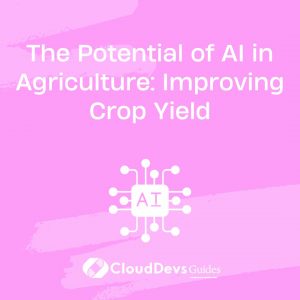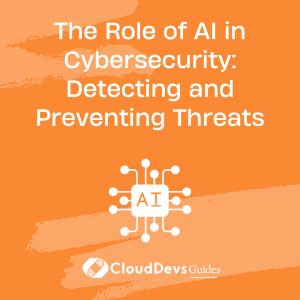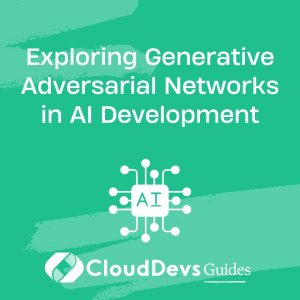AI Development on the Edge: Exploring IoT and Machine Learning
In the rapidly evolving landscape of technology, the convergence of Artificial Intelligence (AI) and Internet of Things (IoT) has opened up new dimensions for innovation. The combination of these two transformative technologies has led to the emergence of Edge Computing, a paradigm that brings computation and data storage closer to where it’s needed, rather than relying solely on centralized cloud infrastructure. This approach is revolutionizing how we develop and deploy AI applications within IoT ecosystems, enabling real-time decision-making, reduced latency, and enhanced privacy. In this blog post, we’ll delve into the exciting realm of AI development on the Edge, focusing on its intersection with IoT and Machine Learning.

1. Understanding Edge Computing in IoT
Traditional IoT systems often involve devices that collect data and transmit it to centralized cloud servers for processing and analysis. While this setup has its merits, it can introduce challenges like latency, bandwidth limitations, and concerns over data privacy and security. Edge Computing addresses these issues by pushing data processing and computation closer to the data source, whether it’s a sensor, camera, or any other IoT device.
1.1. Benefits of Edge Computing in IoT
- Reduced Latency: With data being processed locally on the edge devices, the time taken for decision-making is significantly reduced. This is crucial for applications that require real-time responses, such as autonomous vehicles and industrial automation.
- Bandwidth Optimization: Edge Computing reduces the amount of data that needs to be transmitted to the cloud, thus optimizing bandwidth usage. This is especially valuable in scenarios where network connectivity might be limited or expensive.
- Enhanced Privacy: By processing data locally, sensitive information can be kept within the confines of the edge network, reducing the risk of data breaches and ensuring compliance with privacy regulations.
2. The Role of Machine Learning in Edge Computing
Machine Learning (ML) plays a pivotal role in Edge Computing by enabling devices to make intelligent decisions locally, without relying on continuous cloud connectivity. This is particularly beneficial when dealing with applications that involve real-time data analysis and pattern recognition.
2.1. Challenges of ML on the Edge
Deploying Machine Learning models on edge devices presents unique challenges due to resource constraints, such as limited processing power, memory, and energy. However, advancements in model optimization techniques and hardware acceleration have paved the way for running complex models even on resource-constrained devices.
2.2. Model Optimization for Edge Deployment
Model size reduction and optimization are critical for successful deployment on edge devices. Techniques like quantization, which involves representing model parameters with fewer bits, and pruning, which removes redundant connections in neural networks, help reduce model size without significant loss of accuracy.
python
import tensorflow as tf
from tensorflow.keras.models import load_model
from tensorflow.keras.optimizers import Optimizer
from tensorflow.keras.optimizers.schedules import LearningRateSchedule
def optimize_and_save_model(model: tf.keras.Model, optimizer: Optimizer, lr_schedule: LearningRateSchedule, filepath: str):
# Compile the model with the optimizer and learning rate schedule
model.compile(optimizer=optimizer(learning_rate=lr_schedule), loss='categorical_crossentropy', metrics=['accuracy'])
# Train the model or fine-tune on relevant data
# ...
# Save the optimized model
model.save(filepath)
# Example usage
model = load_model('base_model.h5')
optimizer = tf.keras.optimizers.Adam
lr_schedule = tf.keras.optimizers.schedules.ExponentialDecay(0.01, decay_steps=10000, decay_rate=0.9)
optimize_and_save_model(model, optimizer, lr_schedule, 'optimized_model.h5')
3. Real-World Applications
The fusion of IoT, Edge Computing, and Machine Learning has opened up a myriad of possibilities across various industries. Let’s explore some compelling applications:
3.1. Smart Surveillance Systems
Edge-enabled cameras can perform real-time object detection and recognition locally, sending only relevant information to the cloud, thus optimizing bandwidth usage. This is invaluable for enhancing security and surveillance systems.
3.2. Healthcare and Remote Monitoring
IoT devices equipped with ML capabilities can analyze patients’ vital signs in real-time, raising alerts in case of anomalies. This enables timely intervention and remote patient monitoring, especially beneficial in telemedicine setups.
3.3. Industrial IoT and Predictive Maintenance
In industrial settings, Edge Computing combined with ML can predict equipment failures based on sensor data patterns. This enables proactive maintenance, minimizing downtime and optimizing operational efficiency.
4. Future Trends and Considerations
The journey of AI development on the Edge is still evolving, and several trends are shaping its trajectory:
4.1. Federated Learning
Federated Learning allows models to be trained across multiple edge devices while keeping data localized. This ensures privacy and security while improving model performance over time.
4.2. Custom Hardware Acceleration
As AI workloads on the edge become more complex, there’s a growing emphasis on developing specialized hardware accelerators tailored to ML tasks, further enhancing efficiency and performance.
Conclusion
AI development on the Edge within IoT ecosystems is transforming how we interact with the digital world. The synergy of IoT, Edge Computing, and Machine Learning is pushing the boundaries of innovation across industries, enabling real-time insights, reduced latency, and enhanced privacy. As technology continues to advance, the possibilities for AI on the Edge are boundless, and staying abreast of these developments will be crucial for those looking to make a mark in this exciting field. So, whether you’re a developer, a researcher, or an enthusiast, dive into the realm of AI on the Edge and be a part of the future that’s being shaped today.
Table of Contents









